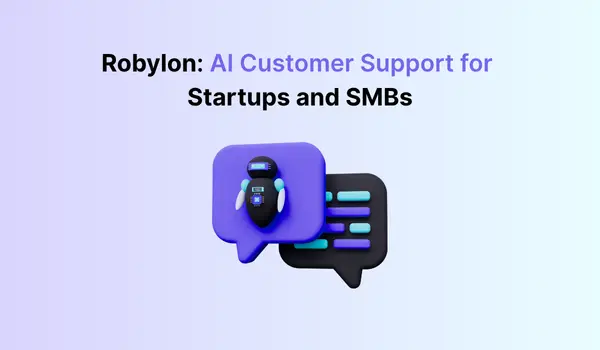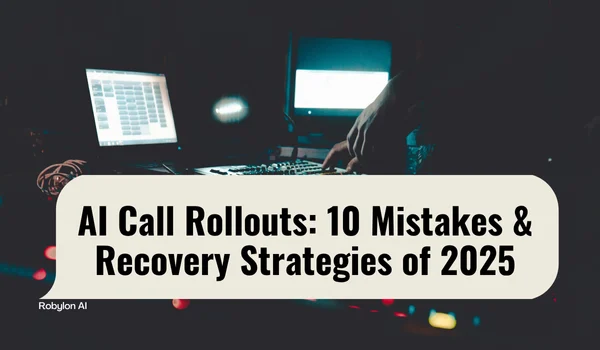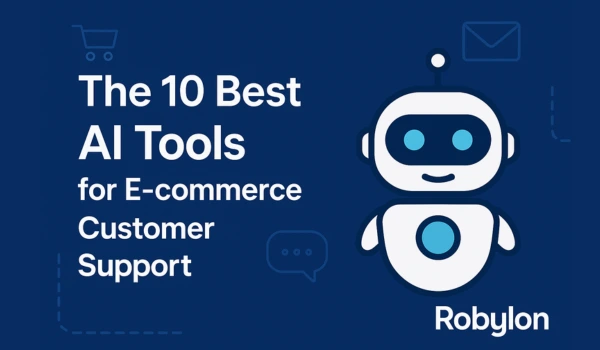TL;DR
- Reclaim ~950+ hours/year by letting AI voice agents handle first-touch dials, voicemails, and callbacks (60 calls/day → 4 min saved × 240 days ≈ 960 hours).
- Cut after-call work with auto-notes, summaries, and instant CRM integration, saving 40–60 minutes/day/rep and boosting sales efficiency/time savings.
- Automate outbound sales calls with AI to qualify leads and auto-schedule meetings, removing 10–15 minutes/booking and reducing no-shows with smart reminders.
- Improve connect rate and follow-through using outbound sales AI for retries, time-zone routing, and compliant opt-outs, freeing reps for high-value conversations.
Fast ROI: Time saved + more qualified meetings − platform cost = clear ROI on AI voice agents in sales.
See how teams turn AI calls into booked meetings in our detailed article; How AI Voice Agents Are Reshaping Sales Outreach.
Introduction
Outbound sales still rely on lengthy call lists, manual dialing, and disorganized notes. SDRs spend most of their day repeating the same pitch, updating CRMs, and chasing callbacks that rarely convert. Connect rates are often below 10%, and even when a call connects, much of the time is spent on qualification and scheduling rather than closing. Each missed call or delayed follow-up slows down the pipeline and inflates SDR costs.
Modern teams address this issue using voice AI, which is advanced AI agents built with speech recognition, natural language processing, and text-to-speech / speech-to-text capabilities. These systems understand context, respond naturally, and log every interaction instantly. The result is faster, consistent, and human-like outreach without manual effort.
Instead of replacing humans, AI now complements them. The human + AI hybrid sales model blends machine precision with human intuition. Voice AI handles repetitive call automation, dialing, note-taking, and appointment booking while SDRs focus on nurturing warm leads and closing deals. The impact is measurable: higher connect rates, shorter response times, and accelerated pipeline growth.
Book a Demo to see how Robylon Voice integrates seamlessly with your CRM/sales flow and boosts SDR automation.
What Is an AI Voice Agent?
An AI voice agent is an AI agent that speaks and listens in real time. It understands intent, asks questions, and completes tasks during a live call. It is not a robocall or IVR (Robocalls and IVRs follow fixed menus). An AI voice agent utilizes conversation intelligence to facilitate natural, two-way conversations and update the CRM as it progresses.
How it works
(Signal → Understanding → Action → Reply)
- STT (speech-to-text): Converts the caller’s speech into text
- NLU (natural language understanding): Interprets intent, entities, and sentiment
- Objection-handling policy: Selects compliant, goal-aligned responses and next actions
- TTS (text-to-speech): Speaks a natural reply in <1–2 seconds
- Optional predictive dialing: Places calls at scale and optimizes time-of-day and retries
Primary role in outbound
- Lead qualification: Ask discovery questions, confirm ICP fit, and score interest
- Appointment scheduling: Offer slots, place calendar events, and send reminders
- First-touch automated outreach: Place initial calls, leave smart voicemails, and trigger follow-ups
AI sales agent vs human SDR
- The agent handles volume, consistency, logging, and routine call automation
- The SDR handles nuance, negotiation, and relationship building
- Together, this human + AI hybrid model increases coverage and pipeline acceleration
The 950+ Hours: Time-Savings Math
Baseline Today
- Avg. rep output: 120 dials/day, ~8% connect rate, ~4 hours talk/day
- After-call work: ~1.5 hours/day on notes, summaries, and CRM updates
- No-shows & rescheduling: Adds more admin and repeated outreach
- Time sinks: List building, manual dialing/voicemails, manual notes, calendar coordination, data cleanup
With AI Voice Agents
- Automating outbound sales with AI: The agent handles first-touch dialing, AI cold calling for outbound sales, voicemail drops, retries, and time-zone routing
- Call analytics auto-notes: Real-time summaries and dispositions feed conversation intelligence into the CRM
- Instant CRM logging: Zero manual entry; clean data for reporting
- Calendar booking: Offer slots, confirm meetings, and send reminders automatically
For the 2025 landscape, compare leading AI voice agent stacks.
Worked Example (per rep)
Result: Time saved with AI voice agents in sales ≈ ~960 hours per rep per year. Even a small team reclaims 900–1,200 hours/year, driven by sales productivity automation and cleaner data from call analytics/conversation intelligence.
Snippet (scannable calculation)
Hours saved/day = (Talk_before - Talk_after) + (Admin_before - Admin_after) + Dialing_before
Annual hours saved ≈ 4.0 h × 240 workdays = 960 h/rep/year
Benchmark impact with top AI call metrics like connect rate, booking rate, and AHT.
Where AI Voice Agents Win in Outbound
Top Use Cases
- Lead qualification: Verify ICP, budget, timeline; push qualified leads to CRM with full context
- Appointment scheduling: Offer slots via calendar APIs, confirm, and auto-remind to cut no-shows
- Event/webinar follow-ups: Call registrants fast, confirm interest, route warms to a rep
- Re-activate stale MQLs: Compliant nudges, re-qualify, update lead scores
- Objection handling (common): Policy-based replies + conversation intel; escalate edge cases
- Voicemail & missed-call flows: Branded voicemails, smart callbacks, auto-log outcomes
- AI phone bots schedule, verify, and resolve
Pipeline Impact
- Higher connect rate: Predictive dialing + time-zone routing hit answer windows
- Consistent follow-through: Automatic callbacks/reminders/next best actions reduce leakage
- Faster acceleration: Reps get warm connects with notes → shorter discovery, more meetings
- Cleaner data: Auto-notes + structured dispositions improve segmentation/targeting
- Scale without headcount: Add campaigns/markets without proportional SDR hiring
AI Sales Agent vs Human SDR
Verdict: AI wins in efficiency, speed, and consistency; humans shine in empathy, complex negotiation, and closing. For a role-by-role breakdown, check AI and the future of call center work.
Implementation
Required Stack
- Telephony & predictive dialing: Carrier-grade calling, local presence, smart retries for higher connect rates
- Speech recognition (STT): Low-latency speech-to-text transcription tuned for sales conversations
- Text-to-speech (TTS): Natural voices with barge-in support
- NLP/NLU engine: Intent, entity, and sentiment detection to drive next best action
- CRM integration (HubSpot/Salesforce): Bi-directional sync for contacts, deals, activities, and dispositions
- Calendaring: Native Google/Microsoft APIs for slot offers, confirmations, and reminders
- Analytics: Dashboards for connect rate, booking rate, objection outcomes, containment, and handoff quality
Integration Steps
- Map dispositions to CRM fields- Create clear outcomes (Qualified, Not ICP, Call Back, No Answer, Voicemail Left, Meeting Booked), sync to Lead/Contact/Activity records.
- Define the qualification rubric- Document ICP, budget, authority, need, and timeline. Encode pass/fail rules and escalation triggers.
- Set scripts and prompts- Provides greeting, discovery paths, compliant disclosures, and objection handling policies, and localize (if needed).
- Wire CRM integration- Connect OAuth, confirm object mappings, enable activity auto-logging, and test round-trip updates.
- Enable calendar booking- Connect calendars, define booking rules, and activate reminders and rescheduling flows.
- QA loop- Review transcripts, update policies, and refine prompts weekly, track booking rate, connect rate, and data accuracy.
- Human + AI hybrid model- Route qualified calls to SDR/AE with full context. Keep humans in complex negotiations and final approvals.
Legal & Compliance
Avoid rollout rework by skipping common AI call mistakes.
- Consent and identification: Provide the caller's identity and purpose, respect local consent rules for cold calls
- Call recording: Follow regional laws; surface recording notices where required
- Opt-out handling: Honor do-not-call and unsubscribe requests in real time, update CRM suppression lists
- Time-of-day and locality rules: Enforce dialing windows and country/state restrictions automatically
- Auditability: Store transcript, disposition, and policy decision logs for reviews and audits
- Not a robocall/IVR: The agent conducts contextual, two-way conversations and adjusts based on intent; interactions are natural, compliant, and fully auditable.
Evaluation Checklist
Voice & Conversation Quality
- Naturalness: Low latency (<300ms), seamless turn-taking, and emotional tone modulation
- Objection Handling: AI should identify common resistance patterns and respond contextually
- Multilingual Support: Evaluate fluency, accent adaptability, and fallback handling across languages
- Speech Recognition Quality: Test accuracy in noisy environments, accent coverage, and filler-word handling
- Barge-in & Interrupt Handling: Should recognize interruptions without dropping context
- Real-Time Notes & Context: Ensure automatic transcription and CRM summary generation
- External Data Calls: Verify if the agent can fetch live data (pricing, CRM notes, recent interactions)
Performance Metrics
ROI Model & KPIs
ROI on AI Voice Agents in Sales
Formula: ROI = (Hours Saved × SDR Blended Rate) + (Extra Meetings × Win Rate × ACV) – AI Agent Cost
Example: (900 hrs × $40/hr) + (80 extra meetings × 20% × $12,000) – $15,000 = $261,000 net gain/year
Explore benchmark ranges and payback windows in our AI Voice Agent ROI guide.
Key Performance Indicators (KPIs)
Note: Measure KPIs like containment rate, call analytics, and time savings to track sales efficiency.
Limitations & Risk Management
With their remarkable capabilities, AI voice agents can streamline outbound sales and save over 950 hours a year; however, success depends on recognizing their boundaries and building smart guardrails around them.
1. Understanding the Edge Cases
- ASR gaps: Strong accents, noise, code-switching
- Domain limits: Great at structured qualification; weaker in niche industries without tuning
- Human nuance: Detects tone but lacks empathy/intuition for tough objections
- Regulations: Varied (TCPA, GDPR, TRAI); mishandled consent/recording/data risks fines + reputation
2. Building Guardrails for Safe Scaling
- Human oversight: AI handles high-volume, low-stakes; route complex to SDRs/AEs
- Auto-escalate: On confusion/silence/policy ambiguity, warm transfer + CRM notes
- Continuous tuning: Weekly/monthly reviews of prompts, objection library, NLP pipelines.
3. Data governance & transparency
- Security: Encrypted recordings, masked PII
- Disclosure: State purpose and recording upfront
4. Strategic Safeguards
- Hybrid handoff: AI 80–90% repetitive; humans for exceptions
- Policy engine: Stop-words/context triggers → fallback
- Audit dashboards: Weekly QA of transcripts/analytics
- Localization tests: Tone/phrasing per geo
- Transparency line: Every call politely discloses automation
Why Robylon
Robylon AI was built to make sales teams productive by automating repetitive calling tasks without losing the human touch. Robylon’s voice agent handles outbound sales calls end-to-end from cold outreach and lead qualification to meeting scheduling and CRM logging.
Unlike generic AI tools, Robylon integrates natively with 40+ tools, including Salesforce, HubSpot, and calendaring APIs, so every call, note, and lead disposition is automatically captured. It operates within strict compliance guardrails, ensuring every outbound interaction is contextual, auditable, and privacy-first.
The result? Sales teams reclaim 950+ hours annually, scale outreach 24×7, and focus human effort where it matters most, building relationships and closing deals.
→ Book a Demo to experience AI voice agents that qualify, follow up, and book meetings autonomously.
Conclusion
Outbound sales no longer need to be a grind of repetitive dials and manual follow-ups. By combining human creativity with AI-driven voice automation, teams can achieve compounding gains in pipeline acceleration, response time, and conversion rate.
Robylon’s hybrid model empowers AI to handle high-volume first-touch calls while SDRs and AEs focus on strategic conversations. Over time, these efficiency gains add up to hundreds of saved hours, faster lead movement, and a measurable boost in revenue.
The future of outbound belongs to agile teams that sell smarter, not harder.
FAQs
Which use cases are best to start with Voice AI?
Begin with AI voice agents for lead qualification and appointment setting. Add event or webinar follow-ups, reactivation of stale MQLs, and voicemail or missed-call workflows. These motions are simple to launch, automate outbound sales calls with AI, and deliver fast wins with measurable hours saved and cleaner data.
Can AI voice agents make outbound prospecting calls?
Yes, they run compliant first-touch outreach, verify ICP fit, and offer meeting slots. With outbound dialing/predictive dialing, they optimize retries and times to improve contact rate/connect rate. Warm conversations transfer to reps with full history, notes, and next actions inside the CRM.
What’s the difference between an AI voice agent and a robocall/IVR?
Robocalls and IVRs follow fixed menus. An AI voice agent understands open-ended speech, asks questions, adapts in real time, and writes to CRM. It can qualify, schedule, and follow up. This is the core of outbound sales AI, not simple playback or keypad trees.
Are AI voice agents legal and compliant for outbound calls?
Yes, when configured correctly. Announce identity and purpose, follow time-of-day rules, obtain consent where required, provide recording disclosure, and instant opt-out. Keep audit logs of transcripts and dispositions. Treat compliance as mandatory for AI cold calling, and align with local laws before scaling volume.
How do AI voice agents handle objections and conversation flow?
Agents detect intent and apply policy rules for objection handling. They confirm facts, offer options, and escalate when signals indicate complexity. Conversation intelligence reviews transcripts to improve responses over time. When emotion or stakes rise, a human takes over with full context, including notes and next steps.
What is the ROI of deploying AI voice agents in sales?
ROI combines time saved and extra revenue. Hours saved reduce cost. Extra-qualified meetings raise bookings and wins. Subtract the platform cost to get the net benefit. Teams verify ROI on AI voice agents in sales by tracking time saved, meeting rate, and outcomes in call analytics dashboards tied to the pipeline.
What features should I look for in an AI voice agent?
Prioritize accurate speech recognition, fast text-to-speech, robust NLU, policy-based objection handling, and native CRM logging. Add AI outbound calling system features like predictive dialing, time-zone routing, voicemail drops, and calendar booking. Review analytics depth, transcript quality, multilingual support, and compliance controls before launch.
How natural or human-like are AI voice agents on outbound calls?
Modern AI sales calls use low-latency speech tech, barge-in, and smart turn-taking. Policies guide objection responses; they sound natural enough for first touch, qualification, and scheduling. Escalation to a human handles nuance for many teams; this balance delivers the best results in outbound sales AI programs.
What are the risks or limitations of AI cold calling?
There are limits with accents, noisy lines, and rare domain jargon. Compliance must be enforced for consent, recording, and opt-outs. Policy mistakes can harm experience. Reduce risk by training on real calls, adding a human fallback, and reviewing conversation intelligence weekly. Treat AI cold calling as the first-touch layer, not a full replacement.
Can AI voice agents replace human SDRs?
Replacement is not the goal; a “human + AI = hybrid” model works best. The AI sales agent handles volume work like first outreach, basic discovery, summaries, and routing. Humans manage complex discovery, empathy, and negotiation. This split raises quality and protects brand voice while increasing coverage and meetings without large headcount growth.
How many hours can an AI voice agent save a sales rep per year?
Teams typically reclaim 950-1,200 hours per representative each year. AI voice agents handle first-touch dials, voicemails, notes, and bookings. Admin time drops, follow-ups are on time, and clean CRM data speeds targeting. These gains come from sales productivity, automation, and consistent execution that human reps cannot sustain at scale every day.





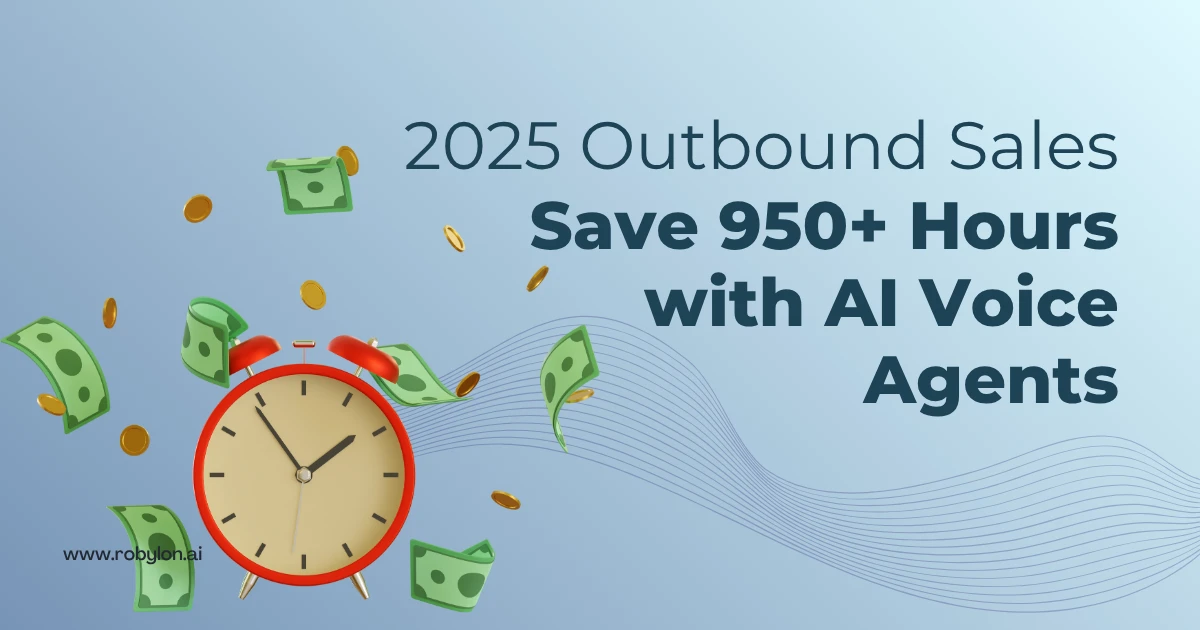



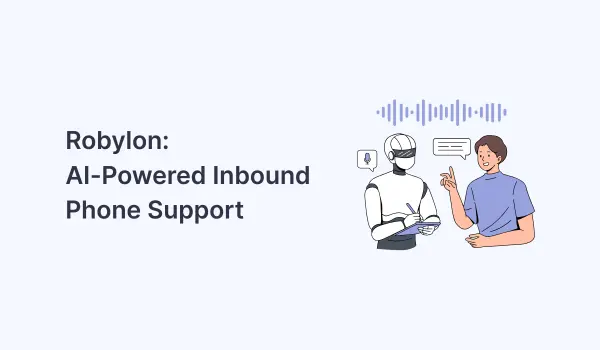
.png)
